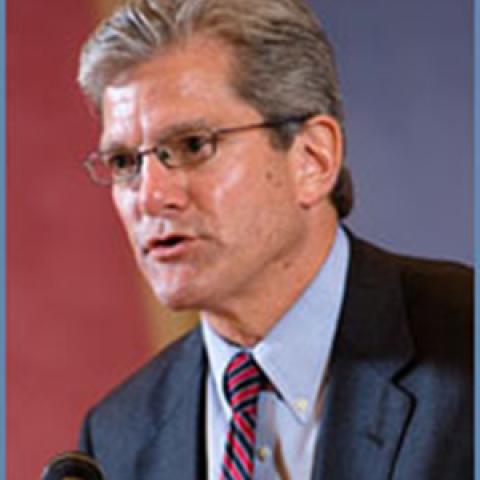North Carolina has been transfixed this past summer by the gripping, tragic testimony of victims of its eugenics program, which forcibly sterilized some 7,600 state residents from 1929 to 1974.
On the occasion of the 100th anniversary of the Carnegie Corporation of New York, it might be instructive to recall that foundation’s contribution to North Carolina’s shameful past.
Why bring up this unpleasant, happily obscure historical footnote on the occasion of the Carnegie Corporation’s grand centenary? Because philanthropy at last seems a bit weary of self-celebration and has begun to realize that it will become more effective only if it is willing to learn from its mistakes. Eugenics presents a serious opportunity to do so.
Eugenics was a pseudo-science popular in the early 20th century, championing the notion that the human race could be biologically enhanced by encouraging the “breeding” of “superior stocks” while discouraging, even forcibly preventing, the propagation of “inferior stocks.”
In America, the mark of “inferiority” could be anything from inherited physical or mental disabilities to being poor or a member of a disfavored racial or ethnic group.
One of the most ill-defined but commonly targeted mental deficiencies, “feeblemindedness,” was thought to be the genetic cause of crime, prostitution, alcoholism, and other social ills.
A particularly popular measure for preventing propagation of the “inferior” was compulsory sterilization, especially for those confined in state institutions. Starting with Indiana in 1907, at least 27 states passed such laws, ultimately ensnaring some 60,000 victims.
Among the most active states was North Carolina. Its sterilization program lasted well into the ’70s, which is why several thousand of its victims are still alive today.
Some of them testified this summer before a governor’s task force pondering compensation for the outrages visited upon them by the state.
The full details of the North Carolina program became explosively public in a five-part series, “Against Their Will,” run by the Winston-Salem Journal in 2002.
Among the revelations was the involvement of the Bowman Gray (now the Wake Forest) School of Medicine in the program.
The medical school had long prided itself on hosting the nation’s first-ever department of medical genetics, founded in 1941 by William Allan. But it turns out that Dr. Allan was a devout eugenicist, determined to reduce the supply of “defectives” by “eugenic measures systematically applied by organized medicine.”
He and his successor, C. Nash Herndon, even provided expert assistance to a North Carolina county’s “systematic effort to eliminate certain genetically unfit strains from the local population.”
What went unmentioned in “Against Their Will” was the central role the Carnegie Corporation of New York and one of its trustees, Frederick Osborn, played in the establishment of the school’s medical genetics program.
Like Dr. Allan and Dr. Herndon, Mr. Osborn was persuaded that a genetics-trained medical profession could promote eugenics without the taint of Nazi race purification.
That did not diminish his enthusiasm for state-sponsored sterilization, however. Writing in A Preface to Eugenics in 1940, Mr. Osborn noted approvingly that “the inexcusable process of allowing feebleminded persons ... to reproduce their kind is on the way to being checked in a number of states in which such persons may be sterilized.”
In his capacity as a Carnegie trustee, he secured several grants from the Carnegie Corporation for the founding of the Bowman Gray department of genetics, thereby furthering his goal of injecting eugenics into the medical profession. Osborn was as well a director of the pro-eugenics Pioneer Fund from 1937 to 1958, which also financed Dr. Herndon’s work.
As investigative reporter Edwin Black documents in War Against the Weak, eugenics would not “have risen above ignorant rants without the backing of corporate philanthropic largess.”
Mr. Black’s exhaustive and authoritative research turned up mountains of evidence confirming the links between the eugenics movement and our first major philanthropies, including the Carnegie Institution of Washington, the Carnegie Corporation, and the Rockefeller Foundation.
Why did eugenics have such an appeal to our first major modern philanthropists?
Because, as Carnegie famously argued, they believed that most previous giving had been “indiscriminate charity ... spent as to encourage the slothful, the drunken, the unworthy,” without addressing the underlying circumstances that produced such conditions.
The new philanthropies, by contrast, were animated by “a search for cause, an attempt to cure evils at their source,” according to the words of John D. Rockefeller.
The eugenics movement spoke directly to this yearning. Charles Davenport, perhaps the most prominent American eugenicist, wondered in 1910 why “tens of millions have been given to bolster up the weak and alleviate the suffering of the sick,” while “no important means have been provided to enable us to learn how the stream of weak and susceptible protoplasm may be checked.”
This made eminent sense to the Carnegie Institution of Washington. It paid for Mr. Davenport’s search for the protoplasm that caused sloth, drunkenness, unworthiness, and other social ills from 1904 until 1939. Frederick Osborn championed similar causes at the Carnegie Corporation for 26 years.
Philanthropy today still aspires to move beyond treating mere symptoms of problems by getting to their causes.
As long as that is so, it should be haunted and humbled by the recollection that this once drove it to treat American citizens as nothing more than bundles of genetic deficiencies, demanding elimination by science rather than “coddling” by charity.
The deep shame of eugenics should not be ignored by philanthropy but rather embraced as its own “original sin.”
Just as does its Judeo-Christian prototype, it should forever remind us that, for all our excellent intentions and formidable powers, we are not imperious gods able to eradicate our flaws once and for all by some grand, scientific intervention.
We are, rather, imperfect human beings called to compassion and charitable care for other imperfect human beings.
But how do the Carnegie entities today view their involvement in eugenics?
Asked if the Carnegie Corporation might wish to comment on its support of the Bowman Gray medical-genetics program, a spokesman noted that those grants were “an aberration” and a departure from better known, manifestly beneficial programs reflecting “the dignity of each individual in a democracy.”
But treating eugenics as a mere aberration mistakenly suggests that it has nothing to teach contemporary foundations about the dignity-denying potential of an extreme “root causes” approach.
I also contacted the Carnegie Institution, noting that I could find no evidence of any official public apology over the years from Carnegie for its eugenics support.
A spokesman responded: “Carnegie’s involvement with eugenics was terminated in the late 1930s. We are not aware of what has been said about it by Carnegie representatives in the intervening 70 years. We are thus unable to confirm your assertion that there has never been an 'apology’ by Carnegie. ...Eugenics was part of mainstream science at the time of Carnegie’s involvement. We have never hidden our role. We also do not know whether apologies were issued by any of the many other institutions that were involved in this dark period in the history of science.”
A quick Google search would have shown that in fact many apologies for eugenic involvement have been issued over the past few years, especially by the governors of the states that were the most enthusiastic sterilizers.
That includes the governor of North Carolina, who was joined in public contrition in 2002 by the dean of the Wake Forest School of Medicine and even the editors of the Winston-Salem Journal, which had been an ardent backer of the North Carolina eugenics program in its day.
But apparently philanthropy means never having to say you’re sorry, or even remembering whether you did or not.
While the Carnegie Corporation’s response is considerably more sensitive to the issue than the Institution’s, neither suggests that Carnegie’s philanthropies have come fully to grips with the depth and significance of their involvement with eugenics.
Public apologies might in fact be in order, and perhaps even contributions to the proposed compensation program for North Carolina’s sterilization victims.
But above all, modern philanthropy should face directly its complicity in eugenics, its own “original sin,” in order to insure that enthusiasm for root-cause solutions never again pushes it into such hubristic excess.
* Carnegie Corporation of New York’s Response
* Carnegie Institution of Washington's Response
Carnegie Corporation of New York’s Statement
Following is a statement issued by the Carnegie Corporation of New York in response to questions from William Schambra about grants that supported institutions that work on eugenics:
In 1941, as the United States struggled with the early days of World War II, Carnegie Corporation of New York made 206 grants to many institutions, including Carnegie Foundation for the Advancement of Teaching, Teachers College, Columbia University and the National Academy of Sciences.
Among those grants was one for $15,000 to Wake Forest College, Bowman Gray School of Medicine in Winston-Salem, North Carolina, for the establishment and support of a Department of Medical Genetics. In succeeding years, two other small grants of $12,000 each were made to the Bowman Gray School of Medicine.
Needless to say, these three grants do not reflect Carnegie Corporation’s core value as we know it: the dignity of each individual in a democracy.
At the same time these grants were made, the Corporation was supporting Gunnar Myrdal’s research that led to the widely acclaimed book, An American Dilemma: The Negro Problem and Modern Democracy. That study was a critical foundation building block for the Brown v. Board of Education Supreme Court decision that ended segregation in public schools.
Andrew Carnegie himself, when he was president of Carnegie Corporation of New York, made grants to historically black colleges, like Tuskegee Institute. Other presidents after him continued to make investments in historically black colleges as well as in many other initiatives and programs aimed at advancing racial equality and achieving social justice.
On the international front, the corporation supported the Second Carnegie Inquiry into Poverty and Development in South Africa, a critical research project that had influence in ending apartheid government in South Africa.
We have not been able to find a public statement in the corporation’s public records that outlines a strategy for the small grants to Wake Forest College. Our reading of the grants file and our understanding of the Bowman Gray School’s work, lead us to conclude that the support of the school was an aberration in our history.
Carnegie Institution of Washington's Response
Following is a statement issued by the Carnegie Institution, now known as the Carnegie Institution for Science, in response to questions from William Schambra about its support of research on eugenics:
Carnegie’s involvement with eugenics was terminated in the late 1930s. We are not aware of what has been said about it by Carnegie representatives in the intervening 70 years. We are thus unable to confirm your assertion that there has never been an “apology” by Carnegie. As explained in this article (U.S. Scientists' Role in the Eugenics Movement (1907-1939): A Contemporary Biologist’s Perspective], eugenics was part of mainstream science at the time of Carnegie’s involvement. We have never hidden our role. We also do not know whether apologies were issued by any of the many other institutions that were involved in this dark period in the history of science.















